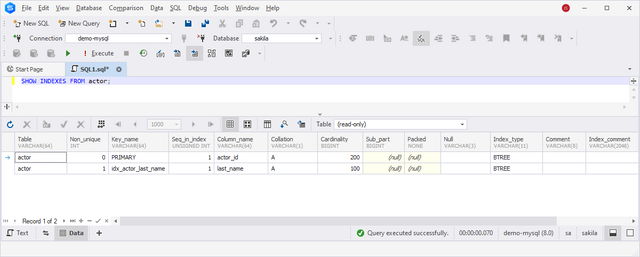
Managing data from small or large databases is a daily task of database administrators and developers. Frequently, they need to search for specific data processing thousands of rows. This can be complicated with large databases and may lead to potential performance issues.
For example, you need to retrieve a list of products with total sales equal to or less than the specified value - 20000. You execute a SELECT * FROM query with the WHERE clause, and MySQL scans each row one by one to check if it satisfies the specified condition. In the output, the matching rows are added to the result to be returned. If MySQL cannot find the required values, it scans each row until the end of the table. What if the data is fetched from a large table? This could waste a significant amount of your time and resources and lead to poor performance. So, indexes may help resolve performance issues with large tables.
An index in MySQL is a data structure that may speed up data retrieval on a table. It arranges values in such a way, so MySQL can quickly find specific rows based on indexed columns without having to scan the full table.
In the article, we'll explore the basics of indexes and their different types available in MySQL. We'll also examine methods for showing indexes and querying specific index information.
https://www.devart.com/dbforge/mysql/studio/mysql-show-indexes.html